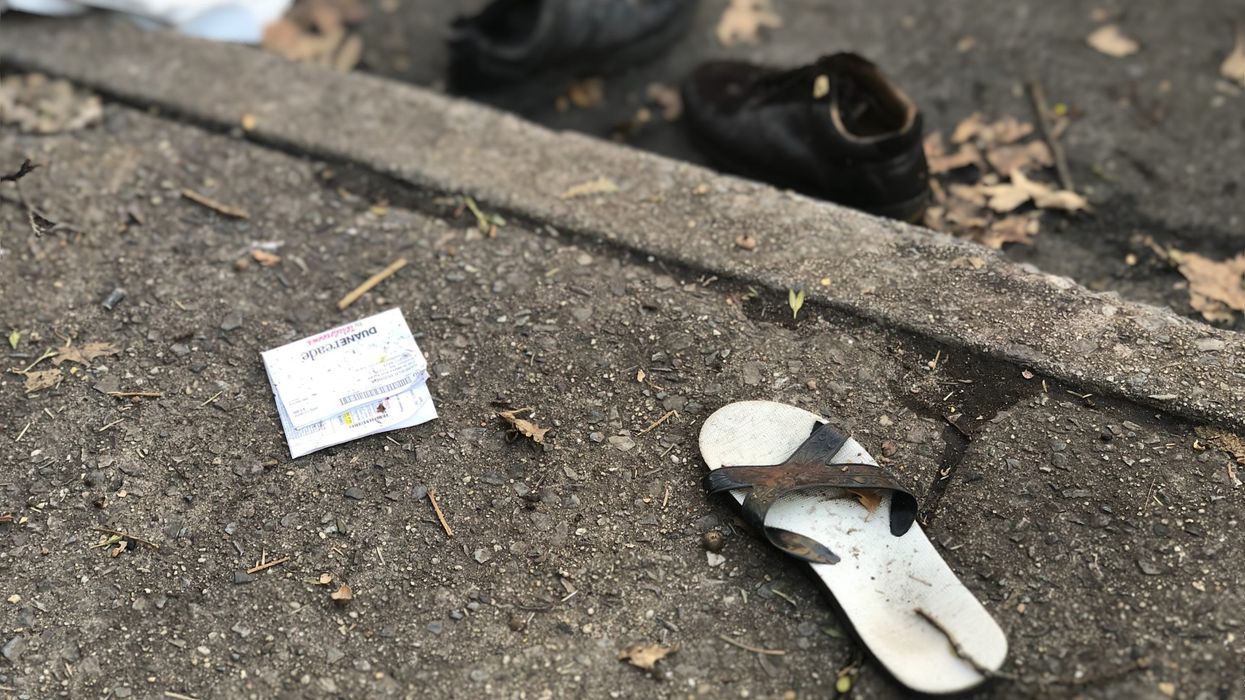Another few seasons like the last and Torontonians will no longer be able to see the ground beneath their feet. As snow and ice disappears, it has revealed an accumulation of months’ worth of stuff. This happens every year, of course, that’s what spring cleaning is all about. But this time around it’s different. The lack of basic-street cleaning last fall means that curbs on residential streets throughout the city are buried beneath thick layers of heavily compressed, semi-composted leaves, trash, earth, salt, cigarette butts and miscellaneous crud.
This is the material that archaeologists dig through when they excavate ancient cities hidden below ground. But now the process through which the past is covered and eventually forgotten can be seen clearly unfolding on the streets of Toronto. As a result, cleaning up the mess will be that much harder and take longer than it would have been last year before winter turned it into a solid mess that has weight and mass.
READ: U Of T Receives Biggest Donation In History For New AI Building
In the meantime, the University of Toronto just announced that Gerald Schwartz and Heather Reisman have donated $100 million for a couple of projects. The gift, the largest ever given to the institution, will be used to build a 750,000 square foot complex for the U of T’s “cluster of world-leading artificial intelligence scientists and biomedical experts, its world-class entrepreneurship network and the country’s largest concentration of student- and faculty-led start-ups…. And also support the launch of the newly conceived Schwartz Reisman Institute for Technology and Society, whose mission will be to explore and address the ethical and societal implications of AI and other emerging technologies.” Located on the northeast corner of College and University, the building will be designed by Weiss/Manfredi, a highly regarded multi-disciplinary architectural practice based in New York City.
Though the two things have nothing in common, together they are a powerful reminder of how a city as rich as Toronto believes it cannot afford to clean the streets and remove the snow. How the two manage to co-exist is the story of a community scared of itself, a community in denial and unable to accept its big-city status. Rather than embrace Toronto’s obvious civic success and invest in its future, Mayor John Tory and his small town council allies prefer to pretend that poor little Hogtown just can’t afford the necessities of urban life.
READ: Poor Little Rich City: How Much Longer Can Toronto Afford Austerity?
This is where 21st-century conservatism has got us – vast wealth for the rich, permanent austerity for everyone else. One can’t help but wonder how long it will be before municipal austerity finally kills civic prosperity. Regardless of how well intentioned the right wing pretends to be, it really only cares about one thing — taxes. As far as conservatives are concerned, taxes are theft, the lower they are the better. That’s fine with those who can afford it – the rich. Though the argument that prosperity can be achieved by chopping budgets and lowering taxes is obvious nonsense, we still hear it daily — and vote for it regularly.
Now a trio of city councillors is breaking with traditional Toronto conservatism and promoting an idea that would help the city raise much-needed revenues. Councillors Joe Cressy, Ana Bailao and Brad Bradford propose to increase the municipal land transfer tax on houses worth more than $3 million by 3 per cent. Currently, the top rate of 2.5 per cent is applied to houses valued at upwards of $2 million. That would mean land transfer tax on a house worth, say, $4 million would rise from $86,500 to almost $91,500. That amounts to a surcharge of about $5,000. The councillors argue the extra money could be used for housing allowances for several hundred families.
READ: TREB Concerned About City Council’s Motion To Hike Land Transfer Tax
Though the plan has support – even the mayor has said he looks forward to the results of further study – critics insist the real problem is lack of affordable housing. They are undoubtedly right. But what’s important is the fact that a group of local politicians have the guts to ignore conventional wisdom and propose a tax increase. Isn’t that supposed to be political suicide?
Then, of course, there’s the even more fundamental problem of the city’s inability to control its own destiny. Toronto’s lack of political and economic power has been the topic of much discussion since the days when David Miller was mayor and city-building was something Torontonians took seriously. Then came Rob Ford and John Tory, and nothing mattered except keeping property taxes below the rate of inflation.
Like all cities in Canada, Toronto has to rely on federal and provincial governments. And with Doug Ford in control of Queen’s Park, the city is fast learning to expect the worst. For Ford, Toronto is a resource to be plundered, much the way former Progressive Conservative Premier Mile Harris did. Back then, it was called downloading, today it’s known as uploading.
READ: Without A Clear Leader, What Does The Future Hold For Toronto?
Short of constitutional change – which isn’t going to happen anytime soon — Toronto’s future will continue to look as cloudy as ever. Sooner or later, the city will have no choice but to hike property taxes and/or find other revenue sources. Until then, the Cressy/Bailao/Bradford scheme to tax the rich is a good, if modest, starting point. The rich, at least, can afford it.


















